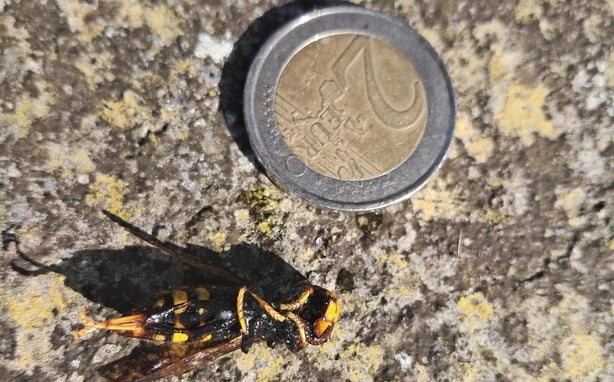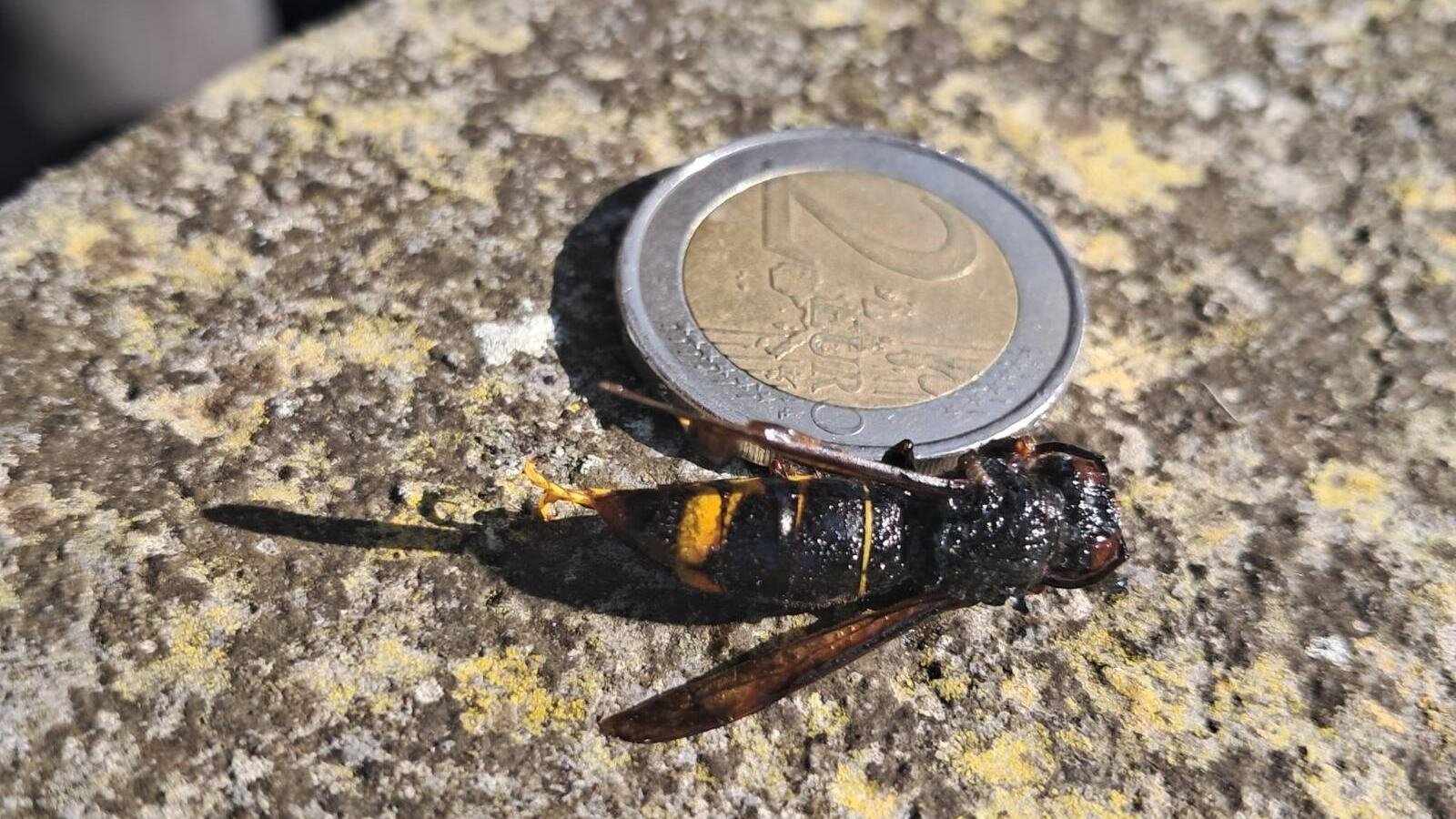The National Parks and Wildlife Service (NPWS) has confirmed a recent sighting and capture of an Asian hornet in the Cork area marking a “biosecurity alert for Ireland”.
In a statement, the Department of Housing, Local Government and Heritage said the Asian hornet poses a “significant threat to biodiversity in Ireland as even a single nest can devastate honeybee populations”, but the discovery does not pose a significant public health risk.
“The sighting has triggered a Government-led response with the establishment of a new taskforce,” the statement said.
NPWS Director of International and EU Affairs Áinle Ní Bhríain described the species as “a particularly aggressive one”.
“This is quite a significant risk to our own local biodiversity. This is an insect predator and if it gets into, for example, a beehive, it can decimate the content of the beehive so it quite a serious threat to our native pollinators and to our honeybee hive sector,” she told RTÉ’s News at One.
“Most wasps eat other insects, but this is a particularly aggressive one. It gets into a hive, it destroys everything in its wake and that’s why it’s such a significant threat.”
Ms Ní Bhríain said that the hornet was “spotted by a member of the public who saw it and thought it was rather unusual, didn’t know what it was, but took a photograph and submitted it to the National Biodiversity Data Centre”.
She described it as being “a bit like a wasp, about 2cm long, mostly black and brown, little orange face, orange tail and yellow legs – he looks like he’s wearing long yellow socks – but that’s where the cuteness ends.
Ms Ní Bhríain said the NPWS is “not entirely sure” how the hornet arrived in Ireland, but “it is likely to have been a stowaway coming in through the ports.
“We’re hoping that that’s the case and this is not an indication of an established nest,” she added.

People have been urged to report any Asian hornet sightings
A taskforce, made up of the National Parks and Wildlife Service, Department of Agriculture, National Biodiversity Data Centre and the National Museum is examining the discovery.
Experts are “trying to establish where it came from, can we catch it, is there evidence of something more sinister than just one,” Ms Ní Bhríain said.
“Our best case scenario is it was one stowaway. Worst case scenario is that there might be a nest. We’re taking that approach, that there might be a nest.
“Experts went down to the site on the day when it was reported … they set traps, there was no indication of a nest or of hornet activity.
“Those traps were monitored all over the weekend and yesterday a hornet was captured.
“The experts are going down again. They’re going to do a full survey tomorrow … not just to catch it but to track and trace where it came from … we’ll continue to monitor it until we’re certain we’ve gone as far as we can to try and capture this and remove it.
Ms Ní Bhríain urged people to report any sightings.
“The public are our eyes on the ground. If they see something. It’s not your common stripy wasp. It looks a little bit different.
“Please photograph it and submit it to the invasives.ie website, ideally with a date and time of where you saw it.
“Don’t approach it. It’s not particularly dangerous … it will sting, it’ll be more painful than a wasp sting.
“If you come across one and its dead then, absolutely, if you can safely submit the sample that’d be fantastic but really it’s just awareness.
“If you see it, it’ll likely be when its foraging around flowers in gardens,” she added.
We need your consent to load this rte-player contentWe use rte-player to manage extra content that can set cookies on your device and collect data about your activity. Please review their details and accept them to load the content.Manage Preferences
Minister of State for Nature, Heritage and Biodiversity Christopher O’Sullivan said hornets are a “threat to our native pollinators and our biodiversity”.
“We must take even a single sighting very seriously. NPWS responded quickly to this report, with a team of experts rapidly tasked to monitor and survey the area,” he said.
“One individual was captured and a co-ordinated response is now underway through a new cross government taskforce who will continue to monitor the situation.
“We are also very grateful for the support of beekeepers and their associations in this endeavour.”
Mr O’Sullivan said that early detection is key to prevent the establishment of this invasive species.
“I urge everyone to be vigilant and inform themselves so that they can recognise and report any sightings of the Asian hornet to help us contain this invasive species and protect our biodiversity.”
